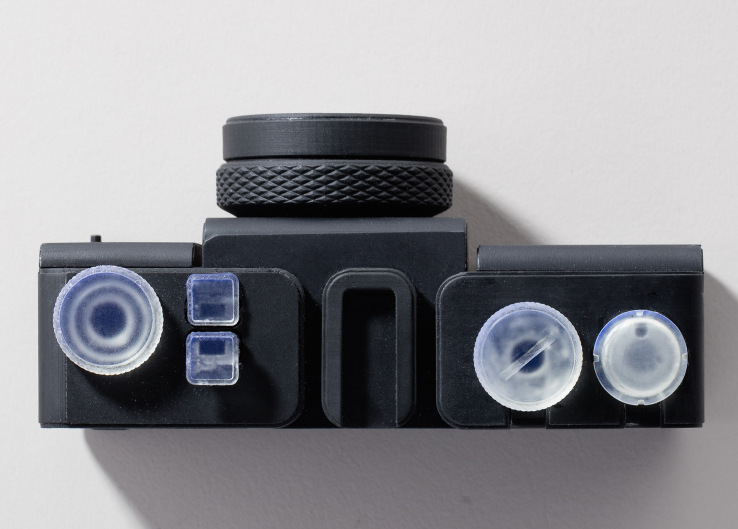

We’ve seen 3D printed cameras before, but they always include some prefabricated part: a hinge, a spring, or more complicated bits like shutters and iris mechanisms. But designer Amos Dudley has done what I’ve always hoped someone would do: make a camera entirely out of 3D printed parts — yes, including the lens.
He used a Form 2 SLA printer, which can put out objects using a variety of resin types — a flexible one for one piece, a rigid one for another, a colored one for one piece, a clear one for another. It prints at a high enough precision (sub-millimeter) that things like small gear teeth or other interacting machine parts can be produced without the need to do lots of manual post-work knocking off pieces or sanding them down.
 The enclosure, film sprocket, and iris are all more or less straightforward — the latter has a rather organic look from the way its resin blades slide past each other.
The enclosure, film sprocket, and iris are all more or less straightforward — the latter has a rather organic look from the way its resin blades slide past each other.
For the shutter, Dudley rejected a few common mechanically simple designs and found a solution in a camera from 1885. Two mirror image planes swoop past one another when the shutter button is pushed, moving from blocking the aperture in one position to blocking it in the other — but while they move, the way is clear. In Dudley’s design, you end up having to press one shutter button to switch them one way and another to switch them back, and there are no set exposure times, but it works.

The amazing part is the lens. First Dudley worked out exactly what optical qualities he’d need, simulating the parts and distances involved in a ray tracer. Then he actually printed it out using a high-quality transparent resin and sanded it down with a custom machine. Then a dip in liquid resin fills in the tiny valleys and flaws, making the lens, if not optically perfect, at least functional. It’s spherical, so there’s problems towards the edges of the frame, but with the aperture limited and other factors accounted for in the body of the camera, it works!
Pop a little film in there (Fujicolor Superia 400 — can’t 3D print that… yet) and it’s ready for its close-ups. Because it has a fixed focus, and not a very distant one.

 The rest of the photos are in Dudley’s Flickr stream.
The rest of the photos are in Dudley’s Flickr stream.
It’s quite an amazing accomplishment, and hopefully it will spur others with similar ideas to create similar devices of their own. Or you could just follow Dudley’s process for practice; the 3D models and other specs are available here.
Featured Image: Amos Dudley

